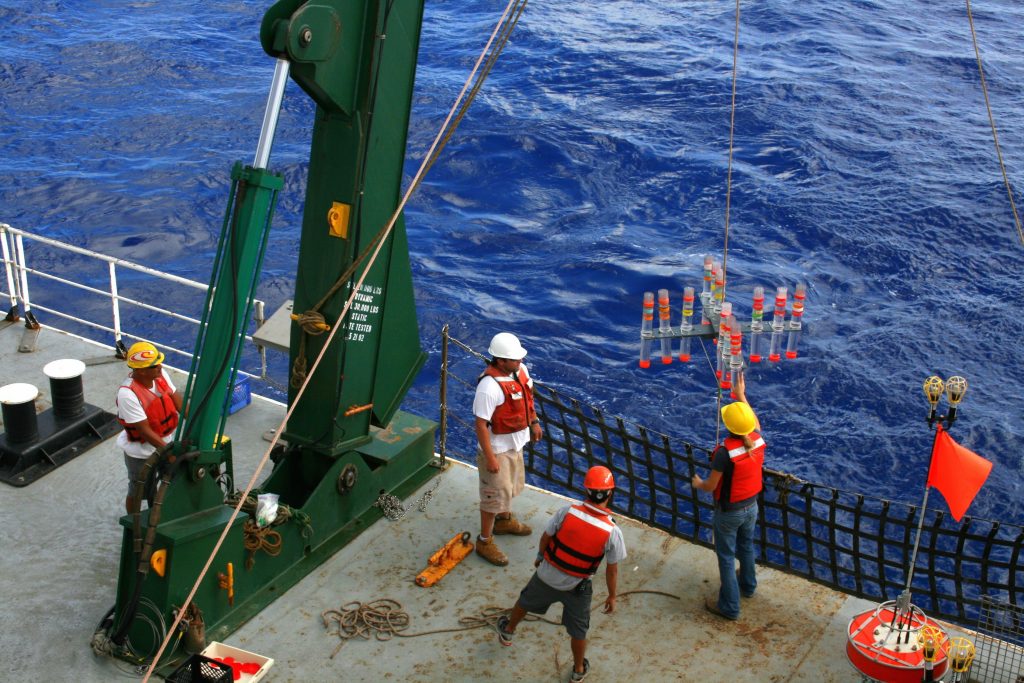Ocean and Climate Research Gets $9M Boost
The Hawai‘i Ocean Time-series (HOT) program based at the University of Hawai‘i at Mānoa has been awarded $9 million in new funding from the National Science Foundation to continue the program for five more years.
This month marks the 30th anniversary of the endeavor that has led to so many discoveries in marine ecology and ocean and climate sciences.
The HOT program was established in 1988 in response to a recognized lack of scientific understanding of the structure, dynamics and controls on major biogeochemical cycles in the sea, especially the carbon cycle.
David Karl and Roger Lukas, who, at the time were both professors of oceanography in UH’s newly created School of Ocean and Earth Science and Technology (SOEST), established a deep ocean observation station dubbed ALOHA (A Long-term Oligotrophic Habitat Assessment), 60 miles north of Oahu, as the benchmark site for the HOT program.
The first 30 years of the HOT program have provided consistent, long-term observations of physical, biological and chemical properties of the open ocean in the North Pacific Subtropical Gyre. A large and diverse team of researchers have documented variability of ocean water masses and circulation; observed habitat variability; determined relationships between microbial community structure and function, including nutrient dynamics and carbon sequestration; and measured carbon dioxide in upper ocean and changes in the capacity of the ocean to absorb it.
“In looking back at the past 30 years, there is plenty to be proud of and to celebrate,” said Karl.
Station ALOHA is one of the best-sampled places in the world’s oceans with a decades-long record of how the ocean responds to climate change. In addition to the monthly ship-based observations, HOT program scientists utilize real-time satellite-based remote observations, unattended mooring measurements, autonomous instrumented gliders and floats, and a cabled seafloor observatory. This has provided invaluable documentation on progressive ocean acidification, changes in seawater temperatures, and changes in Hawai‘i’s marine ecosystem.
During the five-year duration of the grant, the HOT program will transition to new leadership. Angelicque White, a newly-hired oceanography associate professor, and James Potemra, researcher at SOEST, will co-lead this next chapter.
“I am excited to be a part of a program that our society has thankfully supported for 30 years – the long-term monitoring of our planet,” said White, who has conducted research at Station ALOHA for years. “Change is the only constant. Through this program, we’ve been watching the ocean carefully for decades and we’re starting to see strong, meaningful and statistically significant changes in response to human activities. It’s more important than ever that we continue this time-series.”
“Station ALOHA is unique in the world not only because of the HOT program, but it is also where SOEST maintains the deepest real-time observatory, the Aloha Cabled Observatory, and a high quality surface mooring,” said Potemra. “The continuation of HOT is a key piece to keep all these projects going hopefully well into the future.”
The HOT program receives primary funding from the U.S. National Science Foundation (NSF) in partnership with the Simons Foundation, the Gordon and Betty Moore Foundation and the State of Hawai‘i.















